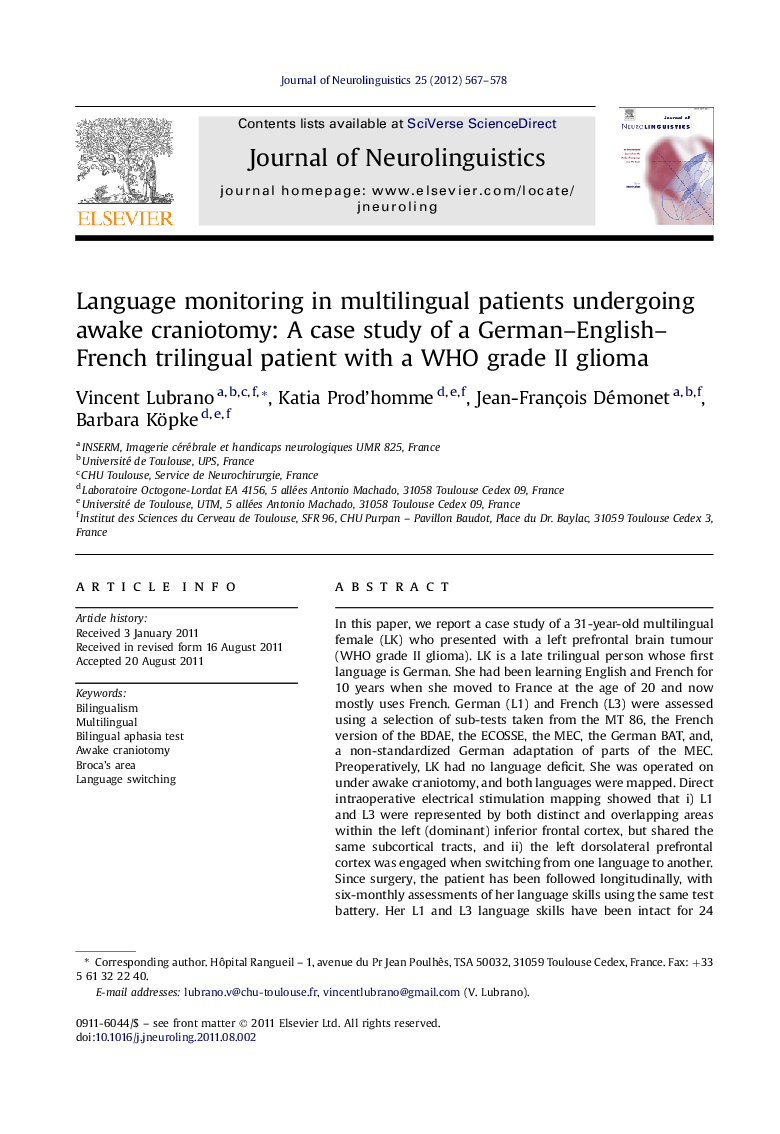| Article ID | Journal | Published Year | Pages | File Type |
|---|---|---|---|---|
| 911844 | Journal of Neurolinguistics | 2012 | 12 Pages |
In this paper, we report a case study of a 31-year-old multilingual female (LK) who presented with a left prefrontal brain tumour (WHO grade II glioma). LK is a late trilingual person whose first language is German. She had been learning English and French for 10 years when she moved to France at the age of 20 and now mostly uses French. German (L1) and French (L3) were assessed using a selection of sub-tests taken from the MT 86, the French version of the BDAE, the ECOSSE, the MEC, the German BAT, and, a non-standardized German adaptation of parts of the MEC. Preoperatively, LK had no language deficit. She was operated on under awake craniotomy, and both languages were mapped. Direct intraoperative electrical stimulation mapping showed that i) L1 and L3 were represented by both distinct and overlapping areas within the left (dominant) inferior frontal cortex, but shared the same subcortical tracts, and ii) the left dorsolateral prefrontal cortex was engaged when switching from one language to another. Since surgery, the patient has been followed longitudinally, with six-monthly assessments of her language skills using the same test battery. Her L1 and L3 language skills have been intact for 24 months postoperatively. After presenting the behavioural and brain mapping data, we discuss their relevance with respect to the organization of language skills within the frontal cortex and deep frontal structures.
► A multilingual patient had brain mapping during the resection of a frontal tumour. ► German (L1) and French (L3) were represented in both distinct and overlapping areas. ► L1 and L3 shared the same subcortical tracts. ► The dorsolateral prefrontal cortex was involved during switching between languages. ► L1 and L3 language skills were intact 24-month postoperatively.
